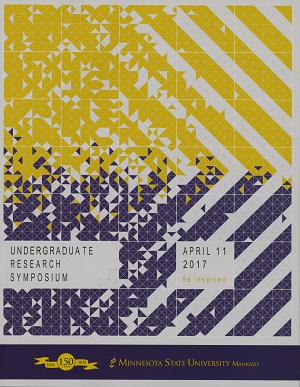Turbocharger Selection Using Live Data on a Single Cylinder Engine
Location
CSU 203
Start Date
11-4-2017 1:05 PM
End Date
11-4-2017 2:05 PM
Student's Major
Automotive and Manufacturing Engineering Technology
Student's College
Science, Engineering and Technology
Mentor's Name
Bruce Jones
Mentor's Department
Automotive and Manufacturing Engineering Technology
Mentor's College
Science, Engineering and Technology
Second Mentor's Name
Gary Mead
Second Mentor's Department
Automotive and Manufacturing Engineering Technology
Second Mentor's College
Science, Engineering and Technology
Description
A Turbocharger is a device use to increase the output of an internal combustion engine. As an engine climbs in RPM its turbocharger begins to spool. A certain spool speed is needed to match the engines flow demands and achieve proper boost pressure. This has led to many different designs of turbochargers. From large turbochargers with massive flow rates for large displacement engines and huge amounts of power. While small turbochargers produce small flow rates for small displacement engines. Smaller turbochargers may also create boost in the engine sooner than a larger turbocharger. Based off this known information a selection for a turbocharger becomes a complicated process. Using evidence logs, recorded from the 2016 Minnesota State University, Mankato's Formula SAE vehicle, their boost pressure goal was not met while the vehicle was on a road course. This was caused by slow spooling of the turbocharger as the engine climbed RPM resulting is low to no positive boost pressure. A smaller turbocharger was instead used to allow for quicker onset of boost.. The two engines were compared as recorded live using a MoTec data logger. The results showed that the smaller turbocharger built positive boost pressure sooner in the RPM sweep as well as holding the targeted pressure at the top of the range. This information will demonstrate that for non-drag race applications a smaller turbocharger has more overall benefits then a larger.
Turbocharger Selection Using Live Data on a Single Cylinder Engine
CSU 203
A Turbocharger is a device use to increase the output of an internal combustion engine. As an engine climbs in RPM its turbocharger begins to spool. A certain spool speed is needed to match the engines flow demands and achieve proper boost pressure. This has led to many different designs of turbochargers. From large turbochargers with massive flow rates for large displacement engines and huge amounts of power. While small turbochargers produce small flow rates for small displacement engines. Smaller turbochargers may also create boost in the engine sooner than a larger turbocharger. Based off this known information a selection for a turbocharger becomes a complicated process. Using evidence logs, recorded from the 2016 Minnesota State University, Mankato's Formula SAE vehicle, their boost pressure goal was not met while the vehicle was on a road course. This was caused by slow spooling of the turbocharger as the engine climbed RPM resulting is low to no positive boost pressure. A smaller turbocharger was instead used to allow for quicker onset of boost.. The two engines were compared as recorded live using a MoTec data logger. The results showed that the smaller turbocharger built positive boost pressure sooner in the RPM sweep as well as holding the targeted pressure at the top of the range. This information will demonstrate that for non-drag race applications a smaller turbocharger has more overall benefits then a larger.
Recommended Citation
Klaphake, Ethan. "Turbocharger Selection Using Live Data on a Single Cylinder Engine." Undergraduate Research Symposium, Mankato, MN, April 11, 2017.
https://cornerstone.lib.mnsu.edu/urs/2017/oral-session-09/2



